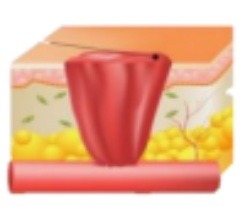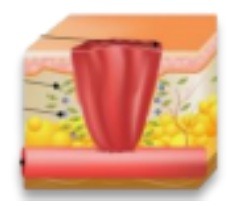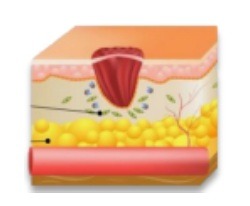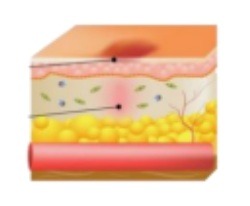Wound healing Stages
After you’ve been injured, your blood vessels constrict and your platelets produce compounds that help you stop bleeding by clotting.
WHAT IS PRESSURE ULCER?

- After you’ve been injured, your blood vessels constrict and your platelets produce compounds that help you stop bleeding by clotting.
- During this phase, the wound’s wounded blood vessels release fluid, causing the wound to expand. The wound repair process begins during the inflammatory phase, and the injured cells and germs are removed from the wound. This procedure stops the bleeding and protects the wound from infection.
- New tissue (known as granulation tissue) is formed as the wound contracts during this phase. A new network of blood vessels forms to provide oxygen for the wound’s new tissue growth.
- The cells that had gathered to repair the area are removed, and the wound is closed.
CLINICAL RELEVANCE
Stage1
Timeframe: Platelets come into touch with collagen during this process, causing activation and aggregation. At the centre is an enzyme called thrombin, which starts the production of a fibrin mesh, which strengthens the platelet clumps and forms a durable clot
Time: about sixty seconds

Stage2
Timeframe: During Phase 2, a type of white blood cells called neutrophils enter the wound to destroy bacteria and remove debris. As the white blood cells leave, specialized cells called macrophages arrive to continue clearing debris. These cells also secrete growth factors and proteins that attract immune system cells to the wound to facilitate tissue repair
Time: Wound onset through day4

Stage 3
Timeframe: In the third stage, epithelial cells arise from the wound bed or margins and begin to migrate across the wound bed in leapfrog fashion until the wound is covered with epithelium.
Time: Day4 through week 2to6

Stage 4

